Cappadocia Archaeology
Photos of Cappadocia archeology (archaeology) in Ihlara Valley. Ihlara Valley where the Melendiz River flows fast is one of the most lush and beautiful places in Cappadocia.We felt like we were walking through a movie scene expecting something dramatic to happen any second.
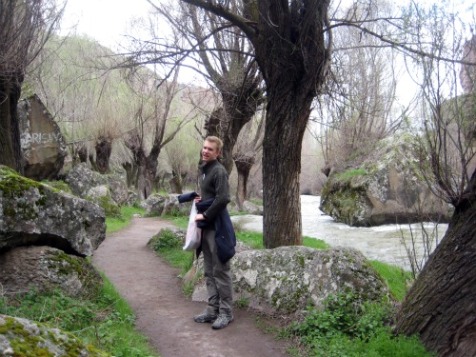
Cappadocia Ihlara Valley
The trimmed trees offer an eerie surreal atmosphere especially when passing through areas covered with what look like snake holes. It's then that we realized that the "Snake Church" (Yilanli Kilise) may hold some local significance.
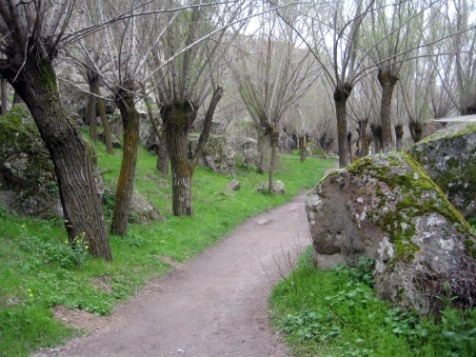
Cappadocia Archeology Ihlara Valley
The earliest known settlers in Cappadocia were the Hatti followed by the Hittites whose empire latest until about 1200 BC.
Some think these early cave structures were started by the Hittites.
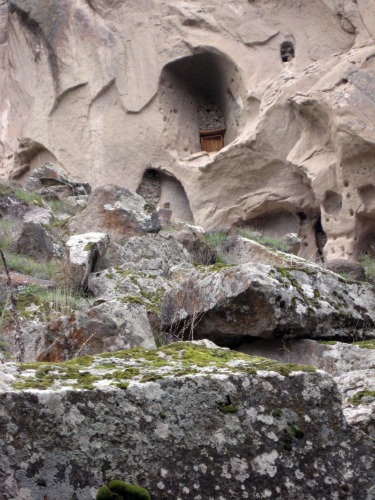
Cappadocia Ihlara Valley
Notice the wooden door. These caves are often used for storage now, although whole troglodyte villages still remain today.
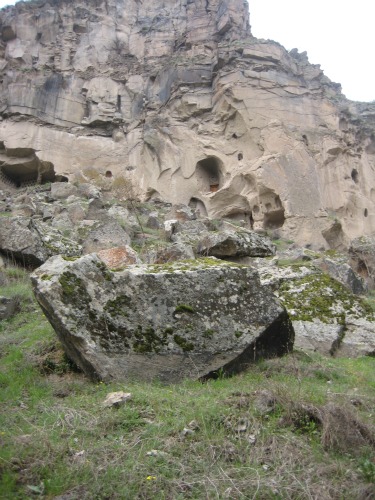
Cappadocia Ihlara Valley
A view to show the difficult access one would have to his storage shed up on the mountain. It would be a safe place, no doubt.
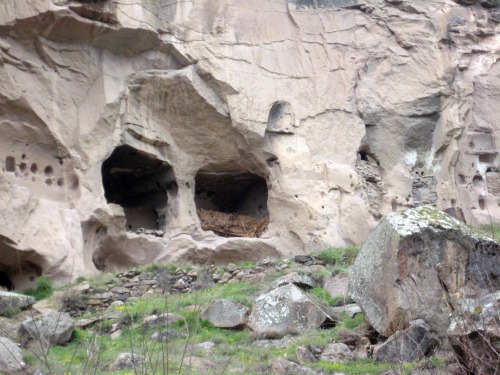
Cappadocia Ihlara Valley
More evidence of current use of the caves.
Various local kingdoms ruled after the Hittites until the sixth century BC, when Persian king, Cyrus the Great, defeated the local Lydian king Croesus.
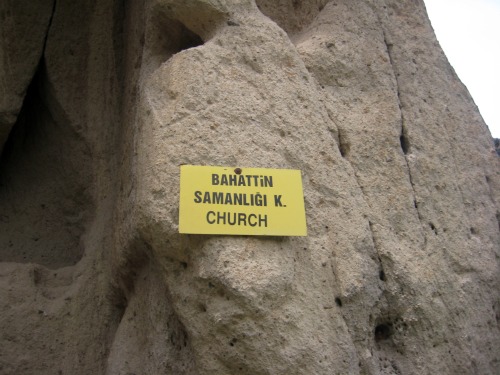
Cappadocia Ihlara Valley
Cappadocia was saved from Persian rule by the arrival of Alexander the Great in 333 BC, and subsequently enjoyed independence for 350 years, until Roman rule with Kayseri (Caesarea) as its capital.
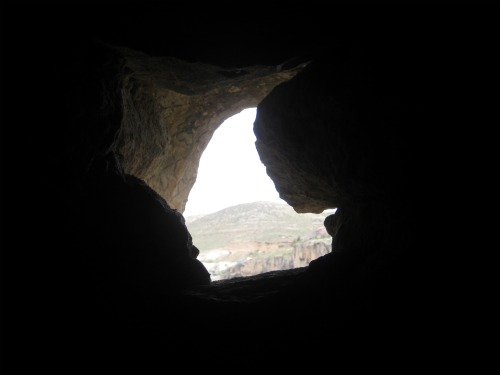
Cappadocia Ihlara Valley
Relative disinterest of the Roman rulers ensured safety for Christians who took refuge in the carved out cliff caves and underground cities in the area.
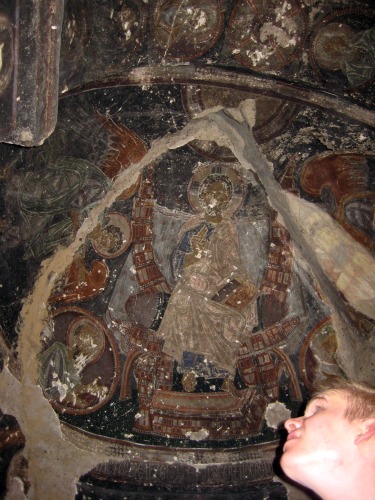
Cappadocia Ihlara Valley
In the eleventh century the Selcuk Turks arrived and were mainly interested in protecting trading routes and building kervansarays (caravan stops) which still dot Cappadocian roads today.
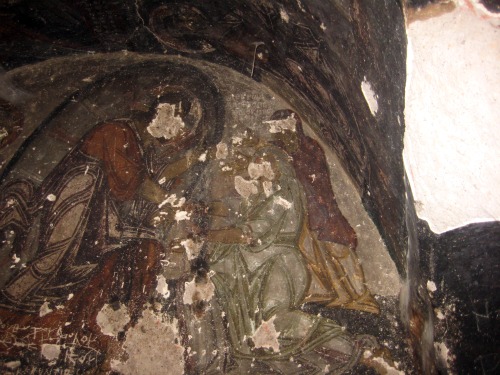
Cappadocia Ihlara Valley
The Mongols defeated the Selcuk Empire in the thirteenth century putting Cappadocia under Karaman dynasty before being incorporated into the Ottoman Empire in the fourteenth century.
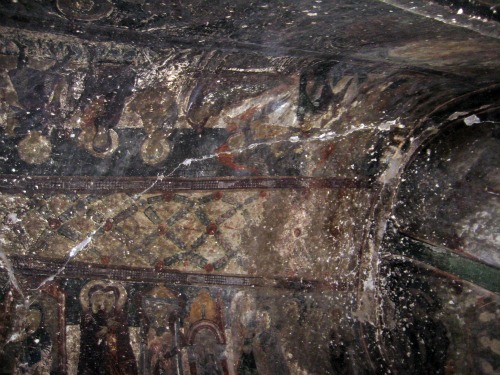
Cappadocia Ihlara Valley
The last Greek Christians left the area in the 1920's during the exchange of populations by the Greek and Turkish governments.
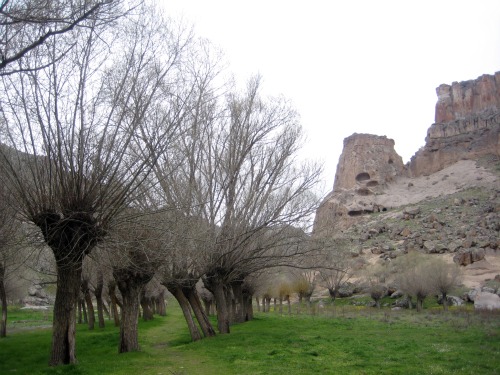
Cappadocia Ihlara Valley
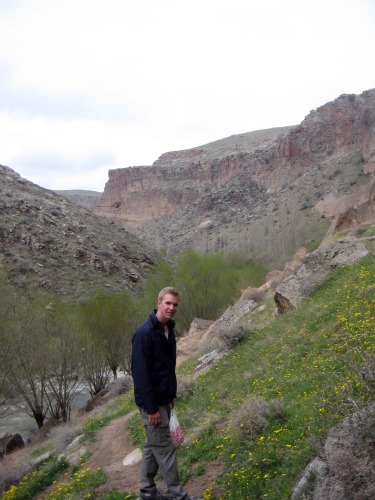
Cappadocia Ihlara Valley
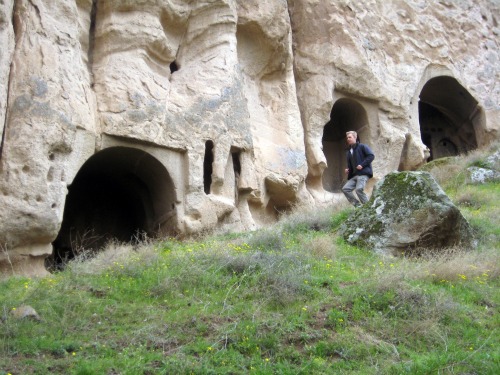
Cappadocia Ihlara Valley
Here John is paying a quick and kindly visit to the locals
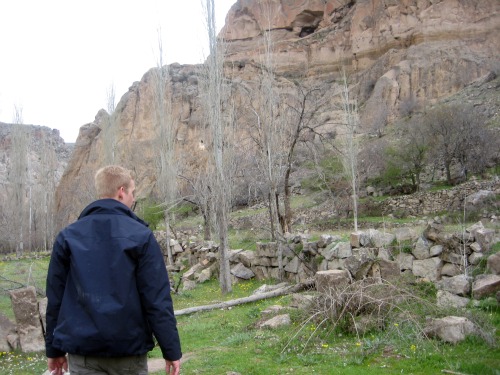
Cappadocia Ihlara Valley
Near this end of Ihlara Valley there are many places where neatly built low rock walls exist. We assume they were maybe for gardens as some local were gardening in them. They were often a type of terracing while some resembled grave yards.
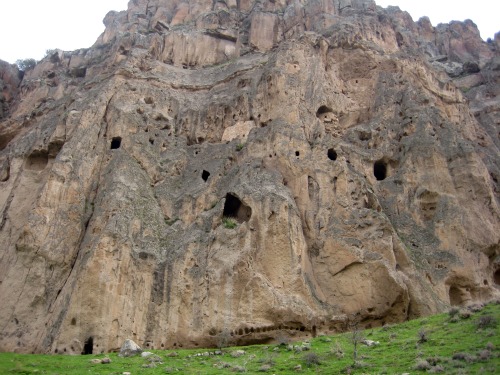
Cappadocia Ihlara Valley
Somehow I don't think a GPS system would work too well if you had to locate an address for one of these caves. It would be nearly impossible to map out all of these tunnels.
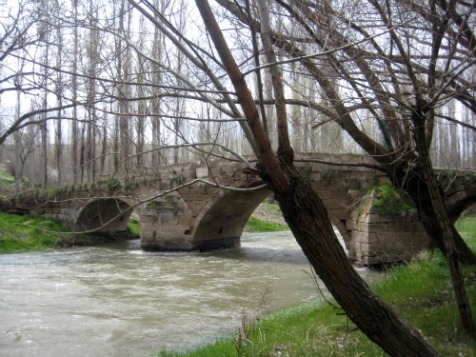
Cappadocia Archeology Ihlara Valley
If you are hiking through Ihlara Valley and come to the Roman looking bridge you can be sure that your journey is now close the end...enjoy your last remaining travels along the Melendiz River.
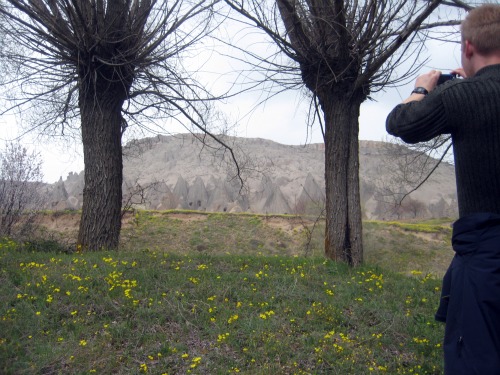
Cappadocia Archeology Ihlara Valley
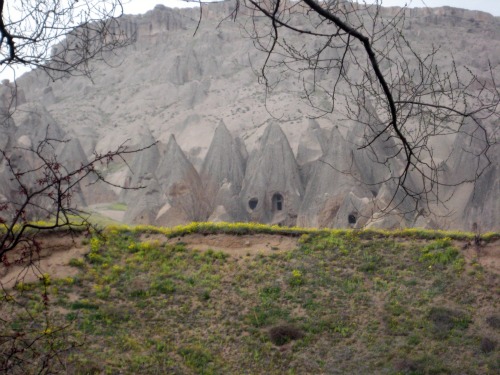
Cappadocia Archeology Ihlara Valley
Part of the Star Wars movie was filmed here in Cappadocia. Does it look familiar?
(Details of Ihlara Valley thanks to Rough Guides.)
More Cappadocia Archeology
More Cappadocia Cave churches
Our start for hiking in Ihlara Valley.
Main Turkey page.
Kari's main page.



